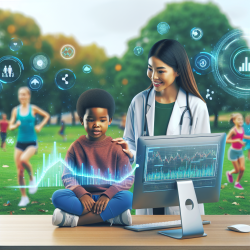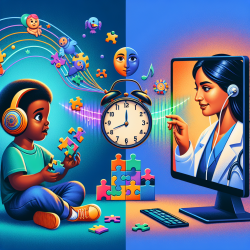Introduction
In the ever-evolving world of speech-language pathology, the integration of cutting-edge technology is pivotal in enhancing therapeutic outcomes, especially for children. A recent study titled "Language mapping with navigated transcranial magnetic stimulation in pediatric and adult patients undergoing epilepsy surgery: Comparison with extraoperative direct cortical stimulation" sheds light on the revolutionary potential of navigated transcranial magnetic stimulation (nTMS) in pediatric epilepsy surgery.
Understanding the Study
The research conducted by Lehtinen et al. provides a comprehensive comparison between nTMS and the traditional direct cortical stimulation (DCS) in mapping language areas in patients undergoing epilepsy surgery. This study is significant as it includes a substantial pediatric population, offering insights into the safety and efficacy of nTMS in children and adolescents.
Key Findings
- Sensitivity and Specificity: The study found that nTMS had a sensitivity of 68% and specificity of 76% when compared to DCS. This suggests that while nTMS is a promising tool, its results should be corroborated with other methods.
- Safety: Importantly, the study reported no seizures during nTMS sessions, highlighting its safety even in pediatric patients with frequent seizures.
- Age and Cognitive Deficits: The research indicated that age and cognitive deficits did not significantly impact the mapping validity, making nTMS a viable option across different age groups and cognitive profiles.
Implications for Practitioners
For practitioners in the field of speech-language pathology, these findings are a call to action. Implementing nTMS in clinical practice could revolutionize the preoperative planning process for epilepsy surgery, particularly in pediatric cases. Here are some ways practitioners can leverage these insights:
- Enhance Preoperative Planning: Use nTMS to noninvasively map language areas, reducing the need for more invasive procedures like DCS.
- Ensure Comprehensive Mapping: While nTMS is effective, practitioners should verify its findings with additional methods, especially in critical language areas.
- Focus on Training: Given the study's findings, practitioners should focus on training children thoroughly before nTMS sessions to ensure accurate results.
Encouraging Further Research
While the study provides a solid foundation, further research is needed to refine nTMS techniques and improve its sensitivity and specificity. Practitioners are encouraged to contribute to this growing body of knowledge by participating in studies and sharing their clinical experiences.
Conclusion
The integration of nTMS in language mapping for epilepsy surgery is a promising development, particularly for pediatric patients. By embracing this technology, practitioners can enhance surgical outcomes and contribute to the advancement of speech-language pathology.
To read the original research paper, please follow this link: Language mapping with navigated transcranial magnetic stimulation in pediatric and adult patients undergoing epilepsy surgery: Comparison with extraoperative direct cortical stimulation.










